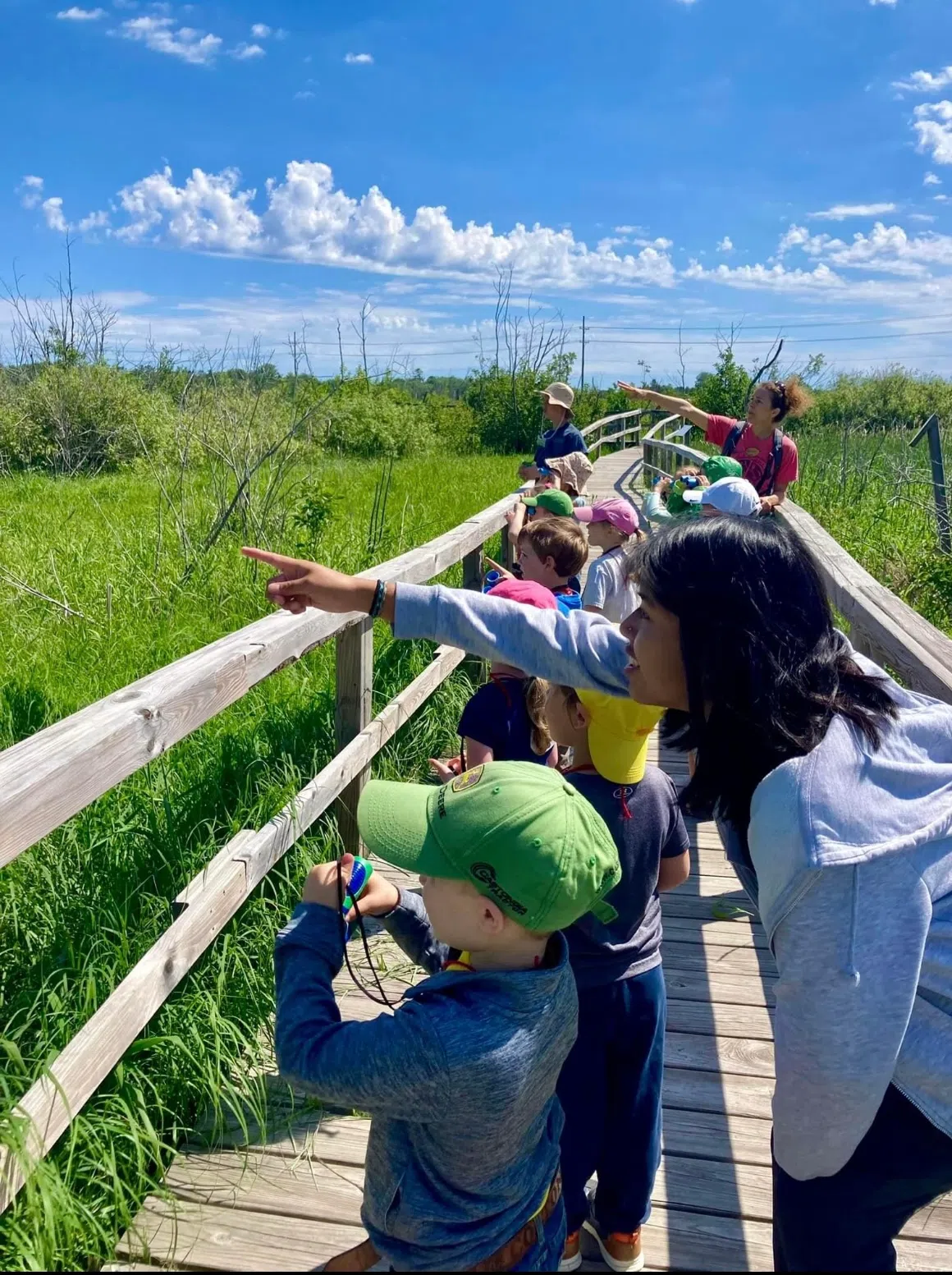By Mary Kennedy, summer intern
Birds are all around us, but it can take a moment for individuals to stop and recognize the multitudes around them. This can apply to all ages, and specifically, the calls and songs that they make.
As a child and even into my adulthood I have spent little time listening to the sounds and songs of birds. Fortunately for me, I had the opportunity to help with the Woodland Dunes Little Wings Program which focused on birds seen and heard around Wisconsin. The children that attended this program were 4 to 5 years old. At this age, they are filled with curiosity and this leads to discoveries. In the case of this program, the discovery was of a variety of birds that surrounded their local backyards. I asked a couple of kids if they were familiar with the sight of them and they answered, “Yes.” They had all previously seen the birds before, but just were not completely sure about the name or sound that each one made.
The interactive activities at the program helped to develop further their comprehension of the sounds of birds and the role of what birds do. One of the activities focused on listening to the calls of birds such as the Black-Capped Chickadees, Crows, Downy Woodpeckers, Northern Cardinals, and more. This was presented as a game and one in which they had to listen and then act out the bird call and fly like a bird. Some of their favorite calls included “cheeseburger” of the Black-Capped Chickadee, and “purty, purty, purty” of the Northern Cardinal. This attuned the kids to tap into the skill of being observant and present in what could be heard. Then the kids took their newfound skills to Cattail Trail to become fully immersed in the experience of seeing and hearing birds.
I am always amazed at how fast children can catch on, even the younger ones. Having the ability to tap into your senses provides for an experiential learning environment. This was apparent while on the Cattail boardwalk, the kids were yelling out the call of the Red-Winged Blackbird. This call sounds like a shrill voice yelling, “VOTE FOR ME.” It was fun to watch the kids try and attract the birds with this phrase. As silly as that sounds, it helped the children retain a piece of information that they will most likely remember for years to come.
These mnemonics for contrasting calls have also been helpful for me as I start to hone in on my bird calls. As the kids learned in this program, I was also learning. Having the opportunity to teach these kids gives me an insight into what they already know and the newfound knowledge that they gain. A transition that helps them to further grow their minds. They can then pass this along to fellow peers or even to individuals like myself, who are not local to the area. There is a new appreciation for these birds not only by me but also by these children who had the experience of attending this wonderful program.












